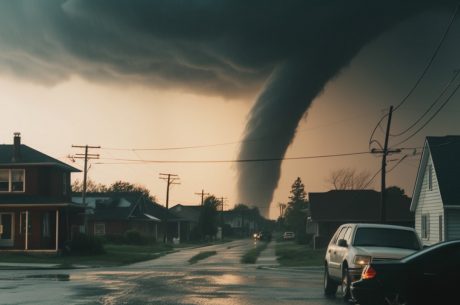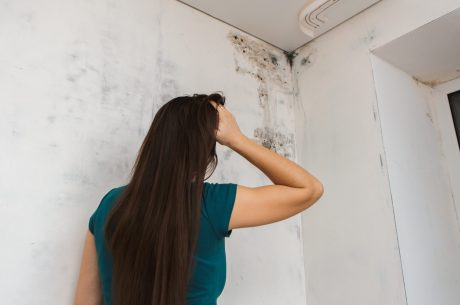Cooking and baking are enjoyable activities that bring people together. However, they also come with inherent risks, particularly the fire risks. Kitchen fires are among the leading causes of house fires and injuries. Understanding fire risks and taking preventive measures is crucial for maintaining a safe cooking environment.
In this comprehensive guide, we will explore the most common fire risks in the kitchen, discuss effective safety tips, and provide actionable steps to prevent accidents while cooking or baking.
Table of Contents
Common Fire Risks While Cooking and Baking
1. Unattended Cooking
One of the most significant contributors to fire risks in the kitchen is leaving food unattended on the stove or in the oven. It only takes a few minutes for a small issue to escalate into a dangerous fire.
- Why It Happens: Distractions, multitasking, or stepping away from the kitchen for a quick task.
- Prevention: Always stay in the kitchen while cooking. If you need to leave, turn off the stove or ask someone else to keep an eye on it.
2. Grease Fires
Grease fires occur when oil or fat becomes too hot and ignites. These fires can spread rapidly and are challenging to extinguish.
- Signs of overheated oil: smoke rising from the pan or a distinct burning smell.
- Prevention: Use a thermometer to monitor oil temperatures, and never leave frying food unattended. If a grease fire occurs, do not use water; instead, cover the pan with a metal lid or use a fire extinguisher.
3. Electrical Appliances
Faulty or improperly used electrical appliances, such as toasters, microwaves, and ovens, can spark fires.
- Common Issues: Frayed cords, overloaded outlets, or malfunctioning devices.
- Prevention: Regularly inspect appliances, avoid overloading circuits, and unplug devices when not in use.
4. Flammable Objects Near Heat Sources
Items such as kitchen towels, paper towels, and plastic containers placed near stoves or ovens can easily catch fire.
- Why It Happens: Lack of awareness or insufficient counter space.
- Prevention: Keep flammable items at least three feet away from heat sources.
5. Oven and Microwave Fires
Ovens and microwaves can ignite fires due to food debris, foil use, or overheating.
- Common Triggers: Built-up grease, aluminum foil sparking, or food being left too long.
- Prevention: Regularly clean your oven and microwave, avoid using foil improperly, and monitor cooking times.
Practical Kitchen Safety Tips
1. Install and Maintain Smoke Detectors
Working smoke detectors are your first line of defense against fire risks.
- Placement: Install them near the kitchen but not directly over the stove to avoid false alarms.
- Maintenance: Test detectors monthly and replace batteries twice a year.
2. Have a Fire Extinguisher Handy
A Class B or multipurpose fire extinguisher is essential for putting out small kitchen fires.
- Location: Keep it in an easily accessible area.
- How to Use: Remember the PASS method: Pull the pin, Aim at the base of the fire, Squeeze the handle, and Sweep side to side.
3. Practice Safe Cooking Habits
Developing good habits can significantly reduce the risk of kitchen fires.
- Wear Proper Clothing: Avoid loose sleeves or dangling fabric that can catch fire.
- Turn Pot Handles Inward: Prevent accidents by ensuring handles don’t extend over the edge of the stove.
- Use Timers: Set timers to remind you to check on your food.
4. Know How to Handle Fires
Understanding how to respond to different types of fire risks can make all the difference.
- Grease Fires: Smother with a lid or baking soda—never use water.
- Oven Fires: Turn off the oven and keep the door closed to contain the flames.
- Electrical Fires: Unplug the appliance if safe to do so and use a fire extinguisher.
The Importance of Regular Maintenance
1. Clean Cooking Surfaces
Built-up grease and food debris are common fire hazards.
- Stovetops: Wipe down surfaces after each use.
- Ovens: Perform deep cleanings every few months or as needed.
2. Inspect and Replace Equipment
Faulty equipment can lead to dangerous situations.
- Appliance Checks: Regularly inspect cords and plugs for damage.
- Replace Old Items: Discard items with visible wear and tear.
3. Ventilation Systems
Ensure your kitchen’s ventilation system is functioning correctly.
- Hood Filters: Clean or replace filters every few months.
- Proper Airflow: Maintain clear paths for ventilation to prevent overheating.
Emergency Preparedness
Despite all precautions, emergencies can still happen. Being prepared can save lives and minimize damage.
1. Create an Escape Plan
- Plan Routes: Identify two exits from the kitchen.
- Practice: Conduct fire drills with family members.
2. Know Emergency Numbers
- Fire Department: Keep the number easily accessible or memorize it.
- Local Emergency Services: Save contacts in your phone.
3. Fire Blankets
- Usage: A fire blanket can smother small flames effectively.
- Storage: Keep it in a visible, easy-to-reach location.
Additional Resources
For more information on fire safety and prevention, visit reputable sources like the National Fire Protection Association (NFPA) or Ready.gov.
By implementing these tips and staying vigilant, you can significantly reduce the risk of fire while cooking and baking. A safe kitchen is not just about delicious meals but also about peace of mind and the well-being of everyone in your home.
PuroClean Property Savers provides emergency restoration services 24 hours a day, seven days a week. Our services include water damage, fire & smoke damage, mold remediation, biohazard cleanup, reconstruction, and large-scale commercial property damage. We service Austin, Bastrop, Buda, Cedar Creek, Cedar Park, Del Valle, Dripping Springs, Elgin, Georgetown, Hutto, Kyle, Leander, Manor, Marble Falls, Pflugerville, Round Rock, Taylor, and Wimberley. Our average “on-site” time is 60 minutes, and we work directly with your local insurance provider.
Our role goes beyond just repairing properties; it’s also repairing lives. Visit us online at “PuroClean Property Savers.” Give us a call now at (512) 956-5700 or email us at [email protected] to schedule a visit. You can also find additional resources for emergency management, fire prevention planning, flash flood situations, and many other risks at the City of Austin Fire Department initiative #LetsGetRealATX.




 PuroClean Property Savers
PuroClean Property Savers